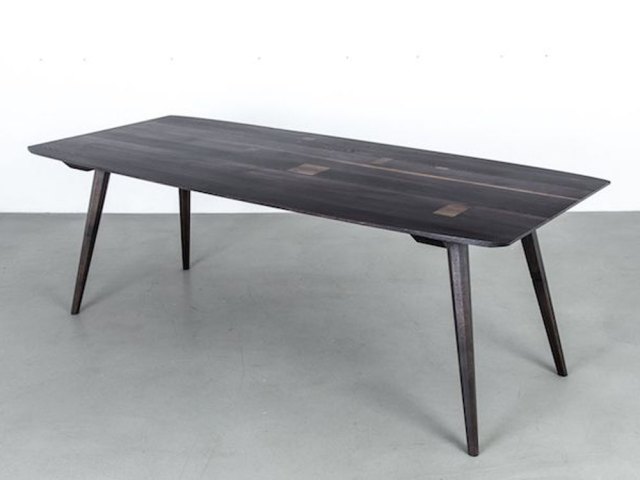The Pelican case and its contents have arrived safely in Ecuador. One of the two locks on the case, however, did not make it. R.I.P.
We are now reasonably settled into our rental house, so it’s time to think about woodworking. While I believe I have pretty much all of the “real” tools I expect to need, I’m otherwise going to be bootstrapping this entire operation from scratch, so I need to buy some Stuff.
First stop was Ecuador’s version of the big box store, the Mega Kywi:

The Kywi stores are a lot like big box stores in the U.S., although the relative sizes of the different departments are different. They don’t have much of a garden section, for example, but they have plumbing fixtures out the wazoo. Like our big box stores, they’re tailored more to the do-it-yourselfer and homeowner than to professionals.
I was surprised to discover that they don’t have any of the standard-issue handsaws with uncomfortable handles and induction-hardened teeth that are omnipresent in the U.S. There were some Stanley saws that looked okay (well, not really), so I bought a 20″ 8 ppi one. I also bought a (too big) triangular file with the expectation that the saw would need some work. I could have bought a more appropriately sized file, but only as part of a set.
Among the hammers were these strange beasts:

The handle is a piece of galvanized steel tubing that’s swaged into the head. They were cheaper than the conventional hammers to the right ($8 vs. $13), but as you might imagine, they did not exactly fall naturally to hand.
These drawknives were hanging next to the saws:

You can’t really tell from the photo, but they’re very roughly ground, and don’t have any kind of brand marking. I thought $38 was a lot to ask for one.
Prices in Ecuador are weird. Food is generally pretty inexpensive, but other stuff is unpredictable. If it’s something that’s made in Ecuador, it’s usually reasonable, but if it’s imported, the price depends on whether or not it’s classified as a necessity or a luxury item. So some imported things cost about the same as in the U.S., while others are double or triple. A medium-sized Coleman ice chest is nearly $100. In our local supermarket, there is a locked glass case in the liquor department containing, among other things, four bottles of Johnny Walker Blue Label (I’ve never seen that much Blue Label in the same place at the same time) at $551 each.
One thing I forgot to pack with me is a countersink, and I have yet to find anyone that sells one here, which is strange since there are plenty of flat head screws for sale. I may have to have my brother-in-law bring one down when he comes to visit. Chris will be happy to hear that Kywi sells unplated flat head steel screws with slotted heads. Unfortunately, they appear to be available only in relatively large sizes, too big for hinges and the like.
Kywi doesn’t sell lumber, although they do have a small selection of rather pathetic looking sheet goods. So next up is the maderera (wood merchant). An architect acquaintance gave me a couple of suggestions for local wood suppliers, but I haven’t yet had a chance to check them out. At least one of the ones he mentioned sells colorado, which is known by the name quebracho in the U.S. Quebracho means “axe breaker,” which is apt, since its Janka hardness of 4570 lbf makes it the hardest commercially available wood species in the world. I don’t know if I have the courage to try it out.
Yesterday, we drove by the two places to figure out exactly where they were. Being that it was Sunday, they were both closed, so I didn’t get to see what they had in stock. In general, it looks like Monterey pine (Pinus radiata) is the common softwood, while blue gum (Eucalyptus globulus) is the “utility” hardwood. Both species are plantation-grown.
As we were heading back from our quest, my wife noticed a small shop (also closed) with a sign reading herramientas para madera (“woodworking tools”) out front. So this afternoon, I walked into town to do some grocery shopping as well as check out this store. It turned out not to be of much interest, stocking mostly the same kinds of tools that Kywi has. They did have a much better selection of cabinet hardware, though, and despite not having the slightest clue what the Spanish term for it was, I was able to find a sliding bolt latch to replace a broken one on one of the windows at the house.
During my walk, I passed by a place that I had driven by several times but never noticed from the car. They stock a variety of sheet goods along with some S4S pine (madera cepillada = “planed wood”):

The prices seem a bit on the high side, but the (roughly) 2×8 boards look suitable for a workbench. And given that the place is about a five-minute walk from the house, I can easily pick up a board (or two) and carry it home without worrying about how to fit it in the car. Maybe not the 13-ft 2×8’s, though.
— Steve Schafer
Like this:
Like Loading...




 “
“






